In the broad strokes, you are probably aware that a tuxedo and a business suit are not the same thing. They are fundamentally different in terms of formality, of course. Being that a tuxedo is the second most formal of all men’s dress codes, following only the white tie dress code which features a tailcoat as well as other style elements.
Like the white tie dress code, tuxedos are really only to be worn for special events in the evening, which is after sundown or 6 pm, whichever comes first. Conversely, a regular suit can be worn in a much wider variety of situations.
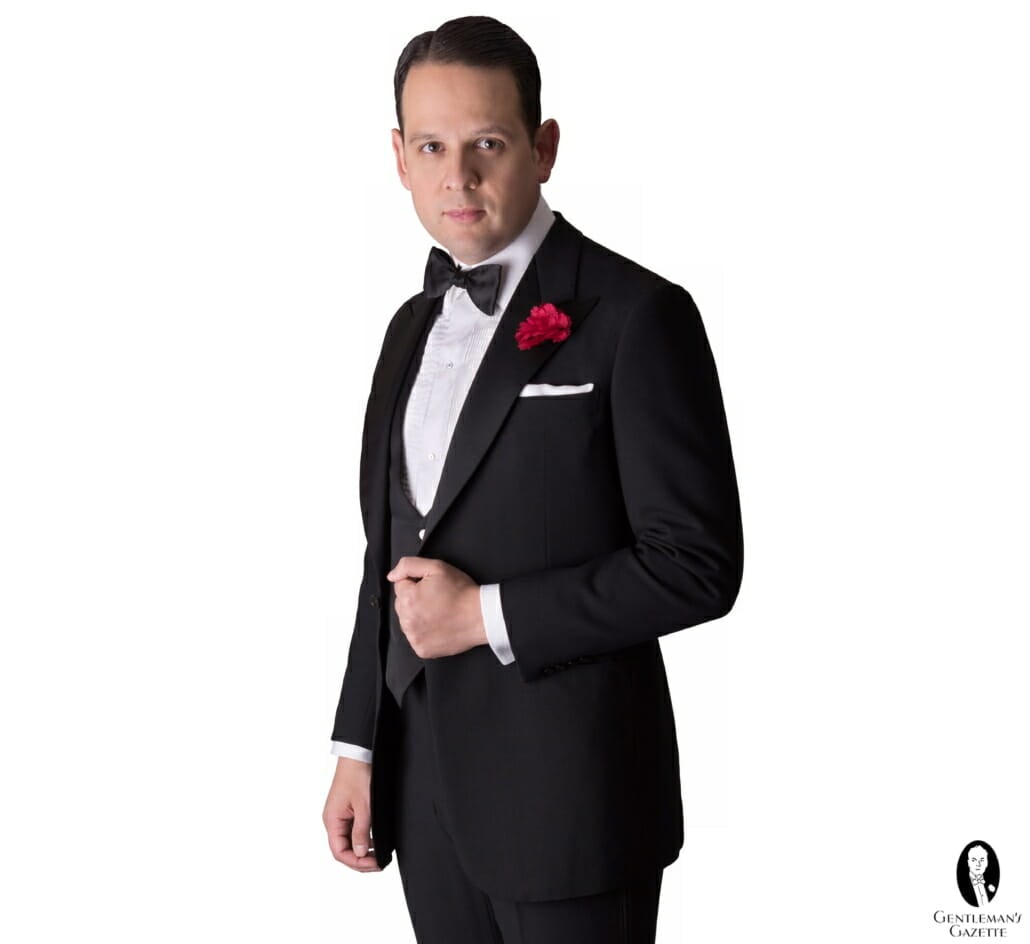
How specifically does the tuxedo come to be seen as more formal than the business suit? In other words, what are the specific styling details that set it apart?
Technically speaking, a tuxedo is still considered to be a type of suit. After all, the definition of a suit is an ensemble of which the jacket and trousers, as well as an optional waistcoat, are all made from the same material. Therefore, a tuxedo fits into this category and fittingly, it is often called a dinner suit outside of the US.
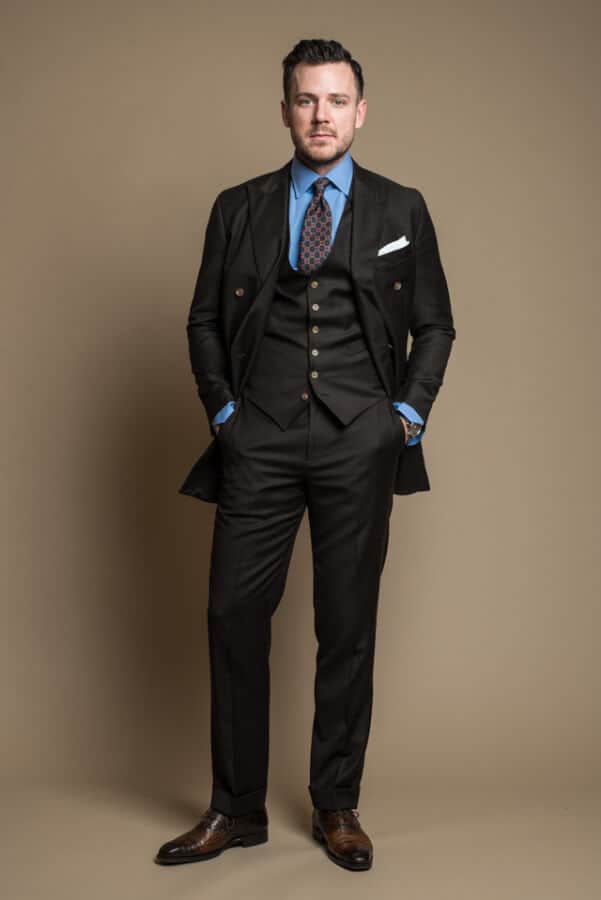
Phrased another way, all standard tuxedos are a type of suit but not all suits are tuxedos. And why the additional clarification of “standard” tuxedos? Well, that’s because the black-tie dress code, as a whole, does have a few other permutations where the jacket and trousers of the ensemble don’t necessarily always match.
Tuxedos vs Business Suits
Fabric
For a tuxedo, black wool or mohair blend is the norm, although a particularly dark shade of blue, referred to as midnight blue is also equally correct. In terms of the weave, the most common type is a fine barathea but it can also be a twill weave, a plain weave, or sometimes, a patterned weave like a fine herringbone.
For a suit, worsted wool is most common but you can also see flannel and even non-woolen materials. Lots of summer suits are made from materials like linen. And in terms of color for suits, darker shades are most formal but the sky is really the limit in the color of suits that you can see as a whole. Obviously, something brighter is going to be less formal and you have several options for patterns as well.
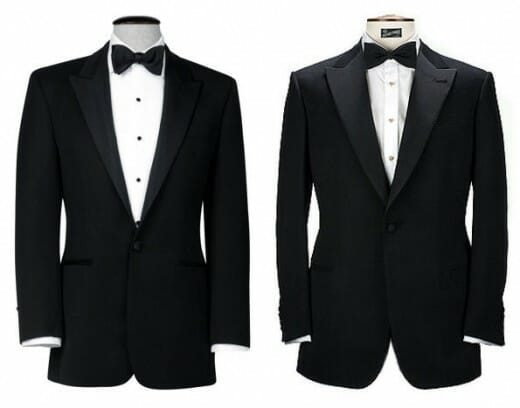
Buttoning Stance
For a tuxedo, you can have either a single-breasted or a double-breasted model. Single-breasted tuxedos most correctly have just one button and double-breasted models will typically feature either two buttons or four.
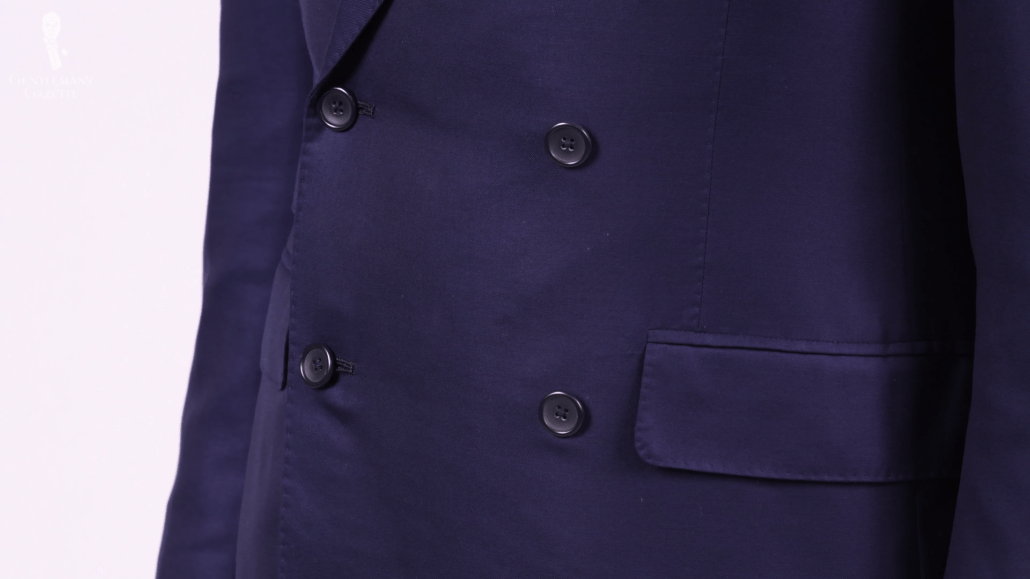
A suit can also be single or double-breasted. Typical single-breasted suits will feature two or three buttons though as few as one or as many as four or more do exist on some models. Double-breasted suits will most often have either four or six buttons.
Lapel Style
In terms of lapel style, a tuxedo will most commonly feature either peak lapels or a shawl collar. Notched lapel tuxedos are becoming more common these days but they are not traditionally seen as being correct since a notched lapel is inherently less formal than either a peak or a shawl.
Conversely, a suit will usually feature either notched lapels or peak lapels if it is single-breasted, though notched lapels are more common, and peak lapels almost exclusively if it’s double-breasted. You are not going to see lots of shawl collars on typical suits but of course, they are out there.
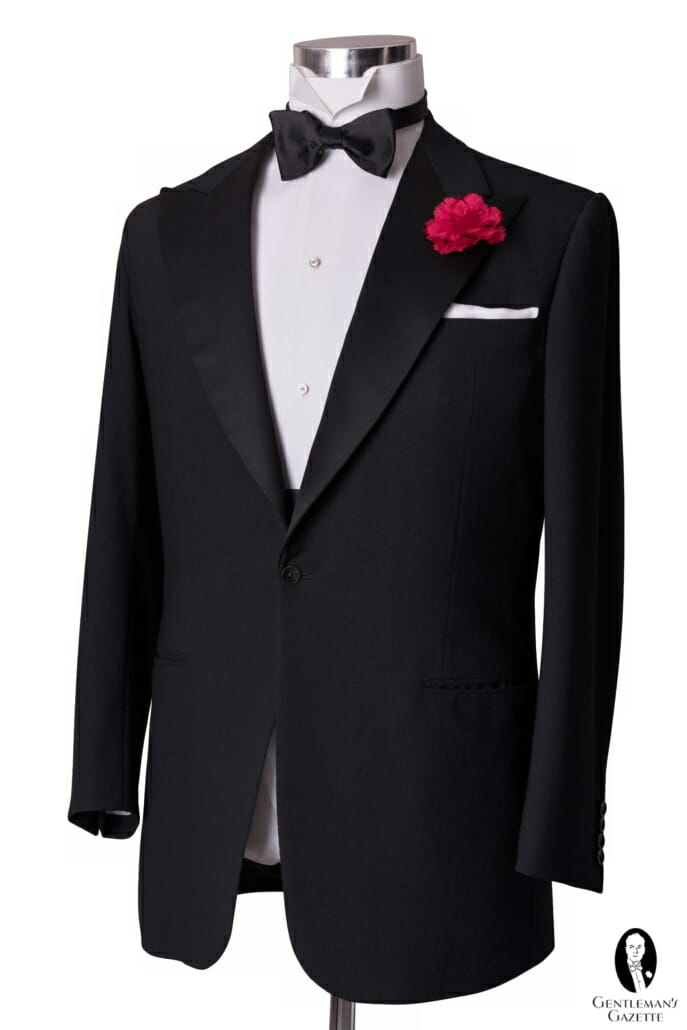
Lapel Facing
A tuxedo’s lapels are almost always covered or faced in a different material than the main body of the jacket. Silk facings are most common these days but in 20th-century tuxedos, you would probably more often see a grosgrain facing. For a complete overview of lapel facing styles, the black tie guide has more information.
Meanwhile, the lapels of a standard suit almost never have any type of special facing. This is usually just referred to as a self faced lapel.
Buttons
Also, in the same way that the lapels of a tuxedo are often faced in a different material, so are the buttons. Typically, tuxedo buttons will be faced in either plain silk or grosgrain silk, usually in line with the lapel facings. Also, on some vintage tuxedos, the buttons are not faced at all but will be made from black bone, onyx, or another material.
Meanwhile, suit buttons are not usually faced but can be made from a variety of materials.
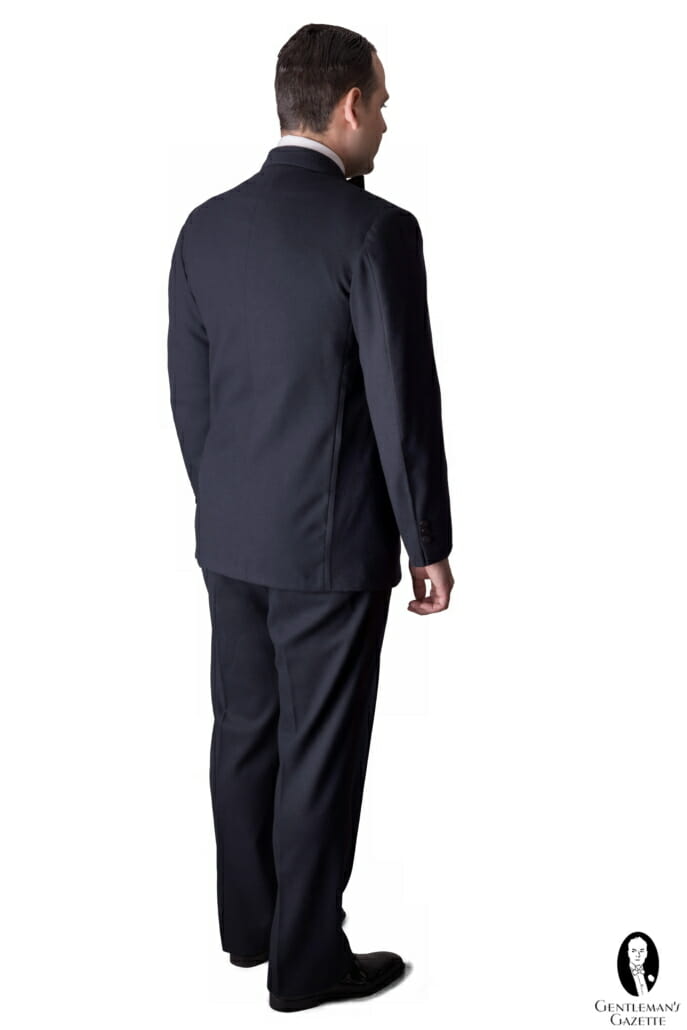
Vents
In terms of vents on the back of the jacket, a tuxedo is designed, above all, to flatter the wearer’s form as much as possible and therefore, is best suited by having no rear vents whatsoever. If a tuxedo jacket does have vents, they will almost always be double vents.
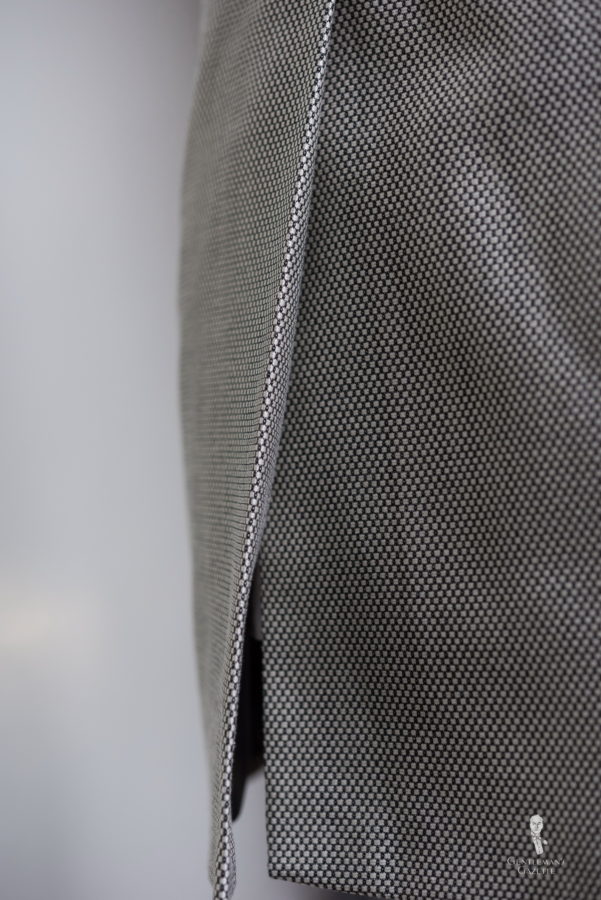
Suit jackets can be ventless but this is increasingly uncommon today. More formal models of suits will feature the double vent and less formal models will feature the sportier single vent.
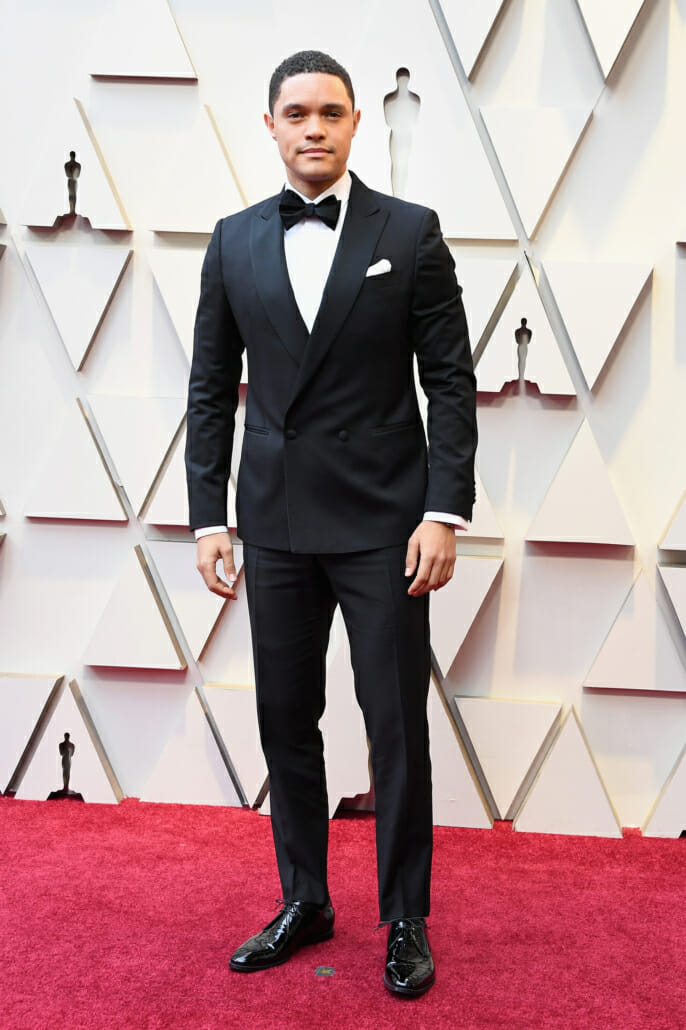
Pockets
Moving now to pockets, a tuxedo jacket should feature just two hip pockets, both jetted. That is to say, decorated slits. A breast pocket is not absolutely necessary but if a tuxedo jacket does have one, just having one that is undecorated is most typical.
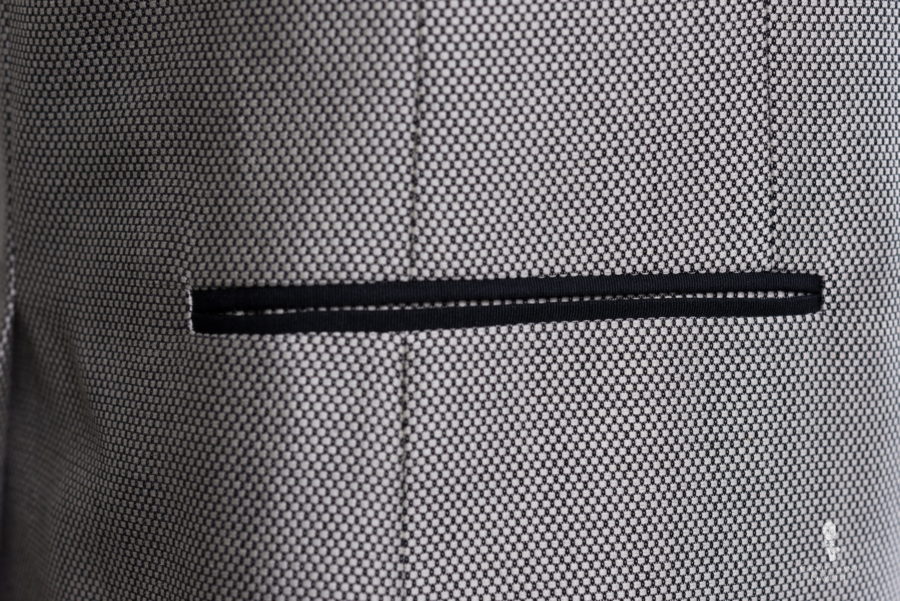
A suit jacket’s hip pockets can be jetted, they can also feature flaps, or they can be exterior patches. Also, some suit jackets will have a third hip pocket referred to as a ticket pocket. A breast pocket is also typical for a suit jacket and typically matches the styling of the hip pockets, though not always.
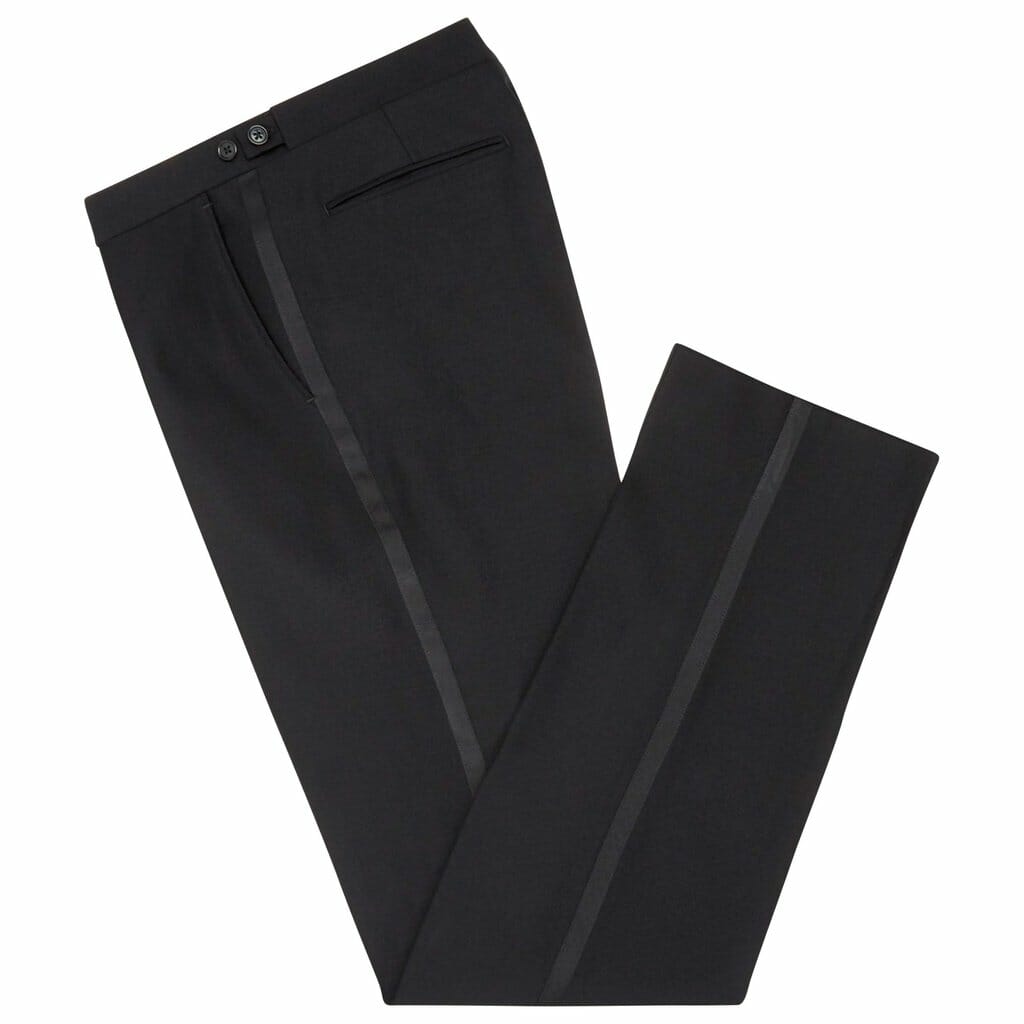
Galon
As we said before, to qualify as a suit, an ensemble must have a jacket and trousers that are made from the same material. In addition to this, tuxedo trousers have a few distinguishing features of their own. Most notable is the braid that runs down the exterior of each leg, sometimes referred to by the French word “Galon“. The braid can be plain satin, actual braided cord, or something that matches the facing of the lapels. Meanwhile, standard suit trousers usually don’t have special detailing on their outside seams.
To learn more about black tie terminology, please check out this glossary.
Adjusters / Belt Loops
Tuxedo trousers will most commonly feature buttons sewn on to the inside of the waistband to accommodate suspenders, alternately called braces. However, some more modern models of tuxedo trouser will also feature side adjusters or will feature adjusters in place of those suspender buttons. One common denominator for tuxedo trousers is that they should not really feature belt loops. Wearing a belt with a tuxedo would be a clash in formality and generally, just would not be appropriate.
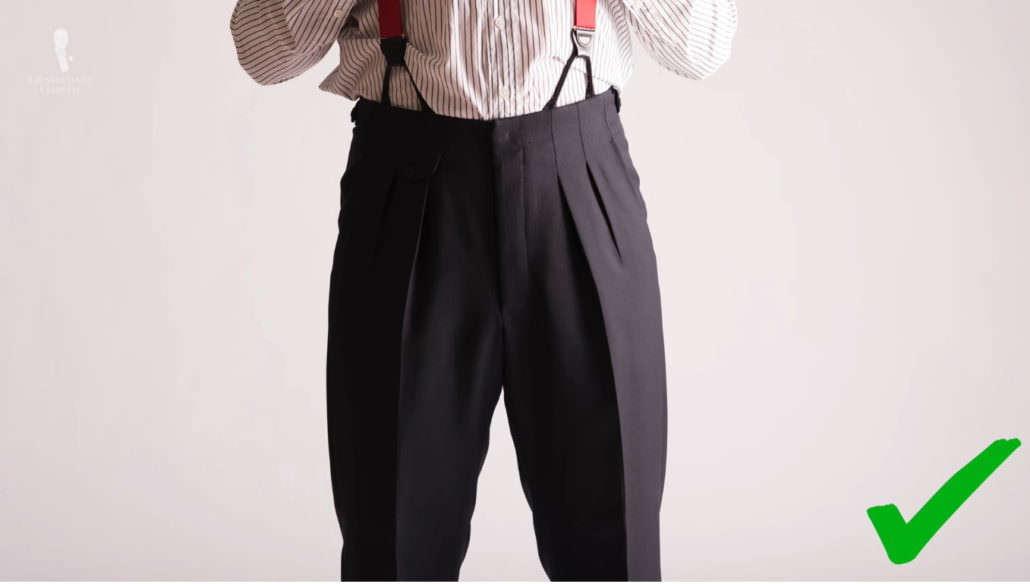
Meanwhile, suit pants can certainly have belt loops and be worn with a belt and they can also feature side adjusters or buttons for suspenders. On a related note, we recently covered the question of whether a man must always wear a belt with looped trousers in our video on 11 bad men style rules to ignore.
Pleats
In terms of pleats, tuxedo pants and suit pants are fairly similar. In that pleating is the more traditional option but you are also perfectly able to wear flat fronted styles. The choice here is yours.
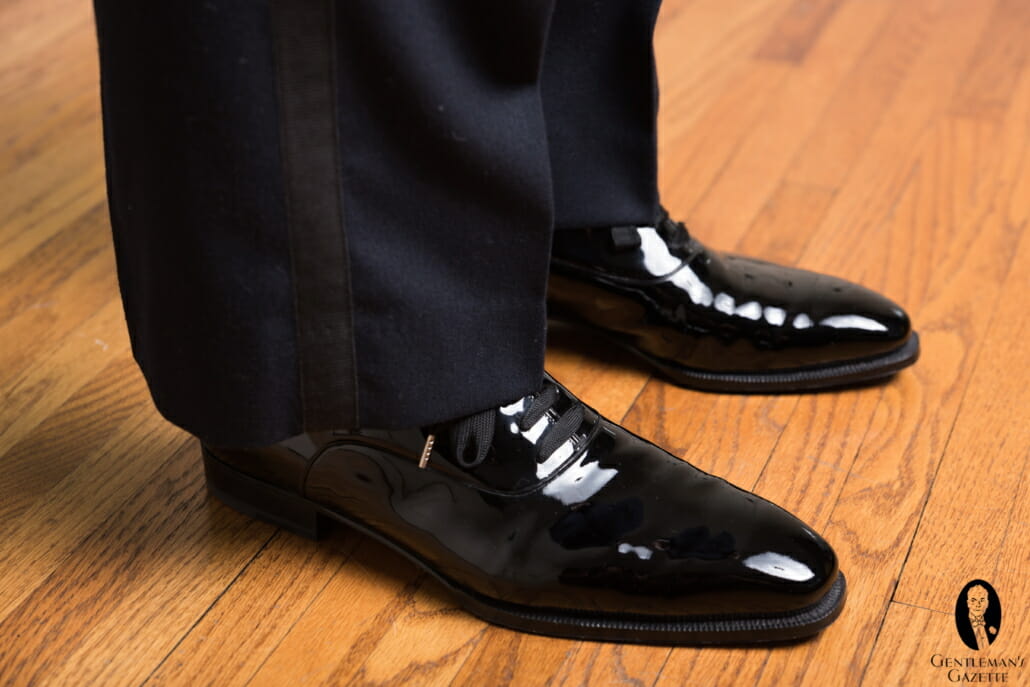
Cuffs / Turn – ups
For tuxedos, as well as for white tie and morning dress, trousers should never feature turn ups or cuffs as they are simply too informal of a styling detail. On the other hand, suit trousers can have or not have cuffs and it is completely up to the wearer’s individual preference.
Waist Covering
Single-breasted tuxedos should always be worn with a waist covering of some kind. Although it is more popular today to see celebrities wearing just a jacket and trousers a single-breasted tuxedo ensemble, this is poor form. Why? Because more likely than not, if you are wearing a single-breasted tuxedo without a waist covering, you are going to be able to see a little bit of your shirt peeking out from under the buttoning point of your jacket. Visually dividing your torso and compromising the ideal silhouette that black tie was designed to provide.
With that said, the traditional waist covering for a single-breasted tuxedo is either a cummerbund made from silk to match the lapel facings or a low cut black evening waistcoat. There is a historical precedent for wearing the white waistcoats that go along with white tie to tuxedos but this a bit more of a vintage-inspired look so that is something you should be aware of. A cummerbund is best suited to a shawl collar type of tuxedo jacket but it can also be worn with peak lapels.
The cummerbund is the more popular waist covering option in America. Also, keep in mind, that your jacket should always be buttoned while standing when wearing a cummerbund and you can unbutton it when seated.
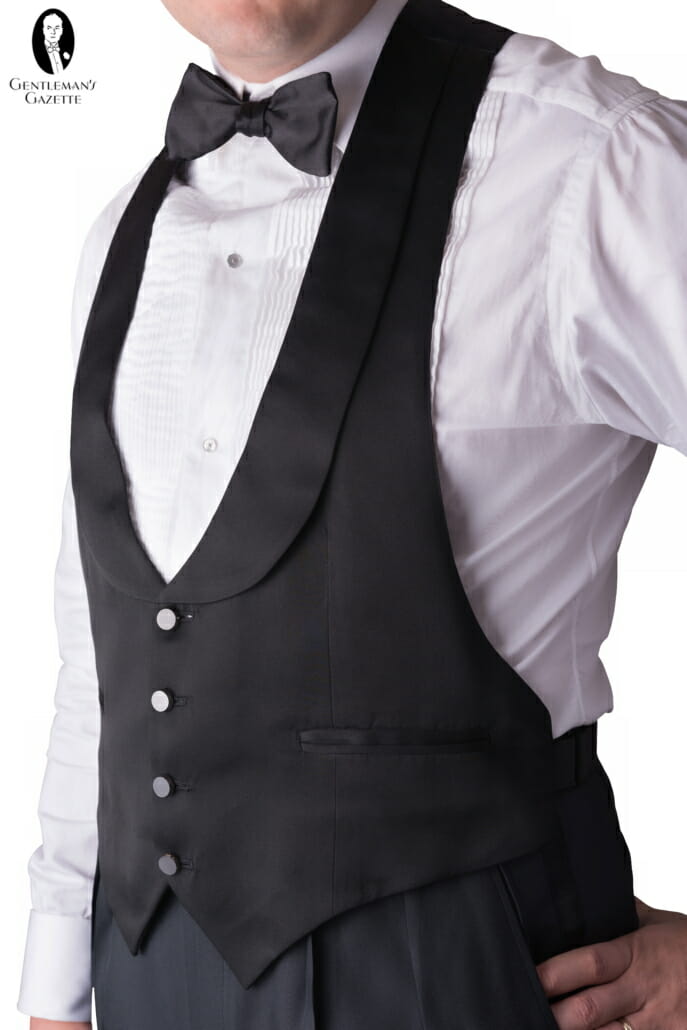
Meanwhile, the waistcoat is more suited to peak lapels but can also be worn with either style. It is more popular in Europe and it should be worn with an unbuttoned jacket. Waist covering are traditionally not worn with double-breasted tuxedos as those jackets are designed to remain closed at all times.
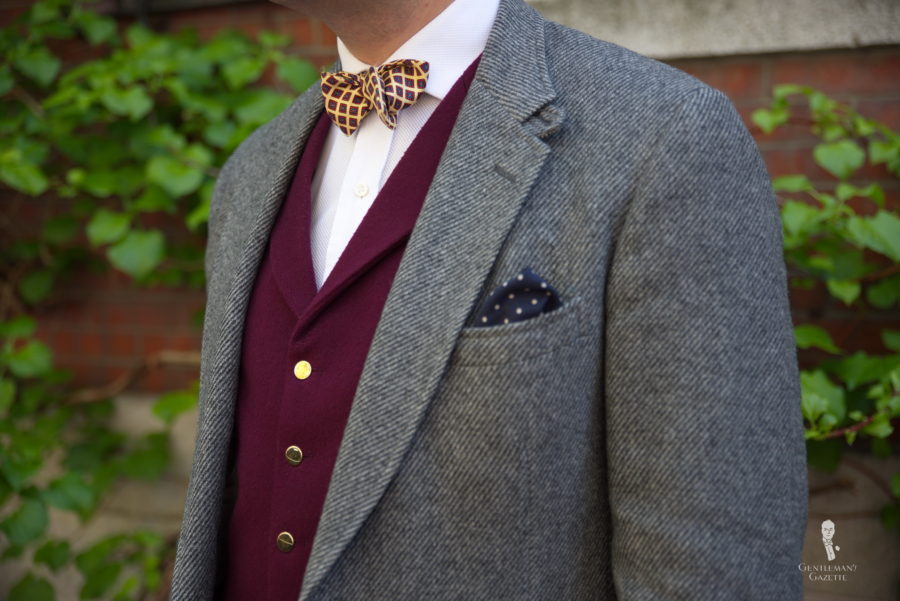
Turning to standard business suits though, single-breasted models can be worn equally correctly as either a two-piece or three-piece ensemble and if a waistcoat is worn, it can either match the fabric of the jacket and trousers or be worn in a contrasting fabric in which case it would qualify as an odd waistcoat. And while there was a time in the late 19th and early 20th centuries, waistcoats were still worn with double-breasted suits, that is really no longer the case today.
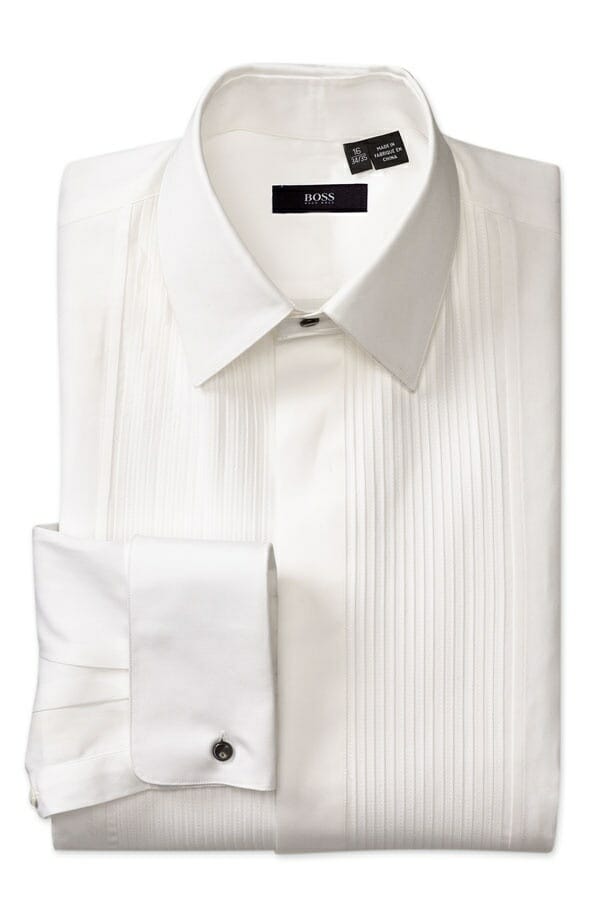
Shirts
A tuxedo shirt follows a specific set of guidelines and it should be as follows. Made from a white fabric and featuring either pleats, a hidden fly front, or in a weave called pique or Marcella. It should feature holes for shirt studs typically either three or four and should also have French cuffs, also called double cuffs to accommodate cufflinks. A tuxedo shirt should feature a standard turndown collar.
While black tie did once share the wing collar style with white tie, most sartorial authorities today agree that the wing collar is best left to the white tie dress code and that the softer turndown collar, pioneered by the Duke of Windsor, looks better with black tie. This is similarly the case with starched fronts and single link cuffs. While they were historically worn with black tie, today, they are best reserved for the apex of elegance that is the white tie dress code. Meanwhile, a shirt to go with a standard suit has almost limitless options in terms of color, cuff, and collar styles, button styles, and so on.
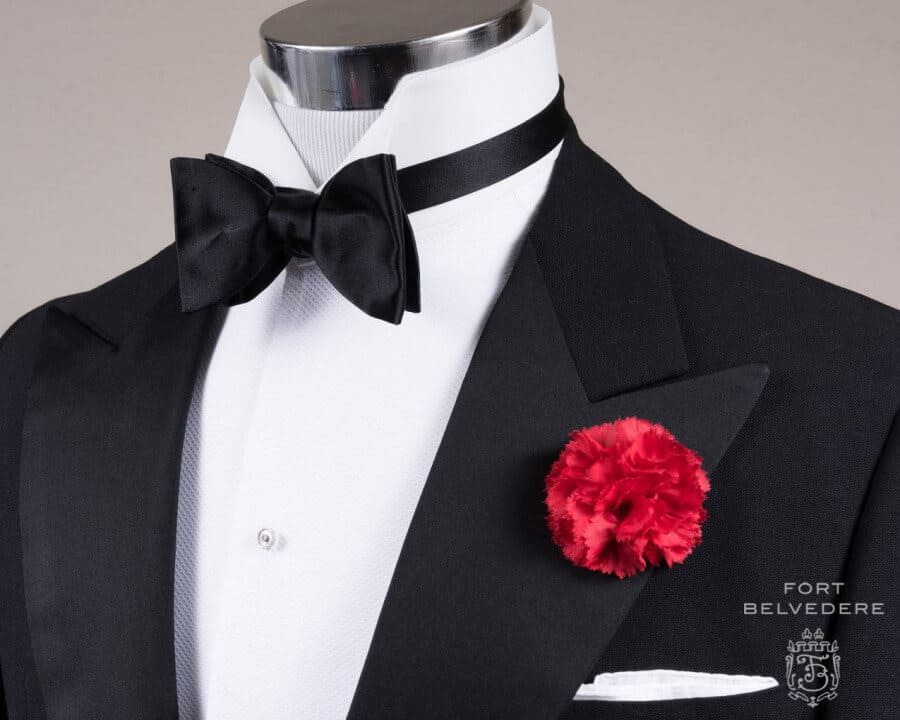
Neckwear
In terms of neckwear, a tuxedo requires a black self-tied silk bow tie to match the lapel facings. After all, the dress code is called black-tie for a reason. A black silk long necktie has become a popular alternative in recent decades but really, it has the overall effect of making the ensemble look less grand. For a video on how to properly tie a bow tie, you can go here.
To find the right bow tie for your face shape take a look at this video.
Meanwhile, your options for ties to be worn with suits are similarly quite varied. If you are wondering how to select and pair a tie with your suit, you can take a look at these videos on finding the right colors for your skin tone and how to use the color wheel to build outfits effectively.
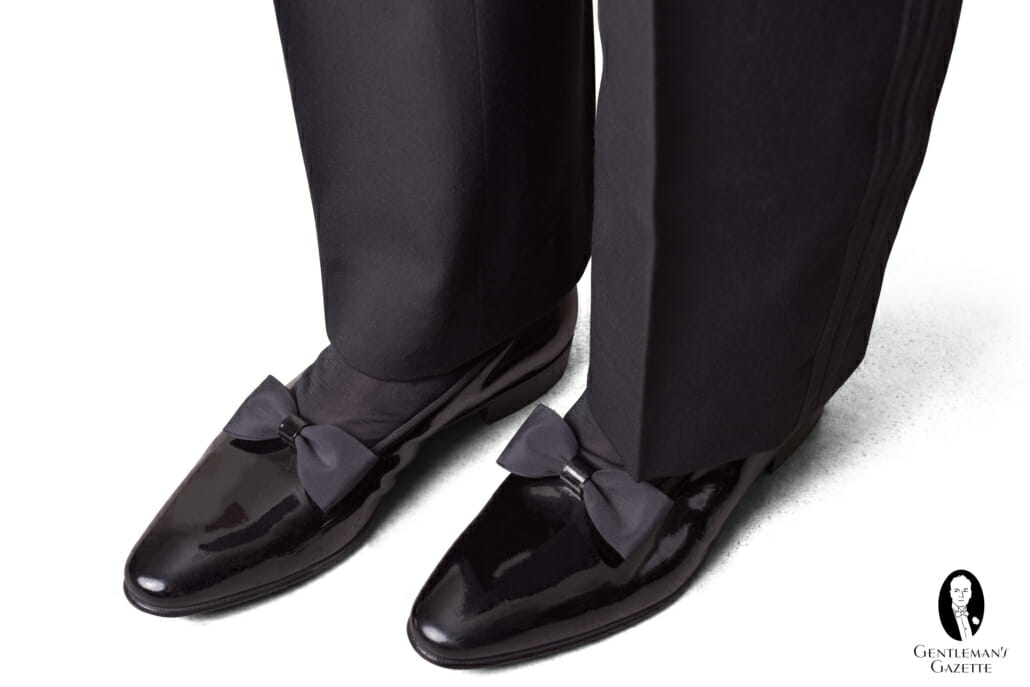
Footwear
Turning to footwear, you’ve got two main options for a tuxedo. Conservatively styles oxford shoes, be they cap-toed, plain toe, or whole cut, or formal evening shoes also called court shoes or opera pumps. As you might well imagine, pumps are the most traditional option but oxfords are the one most commonly worn today. In either case, your footwear must be black and it should be made of either patent leather or highly polished calfskin or cordovan. Shoes for suits are as you might have guessed, are more highly variable.
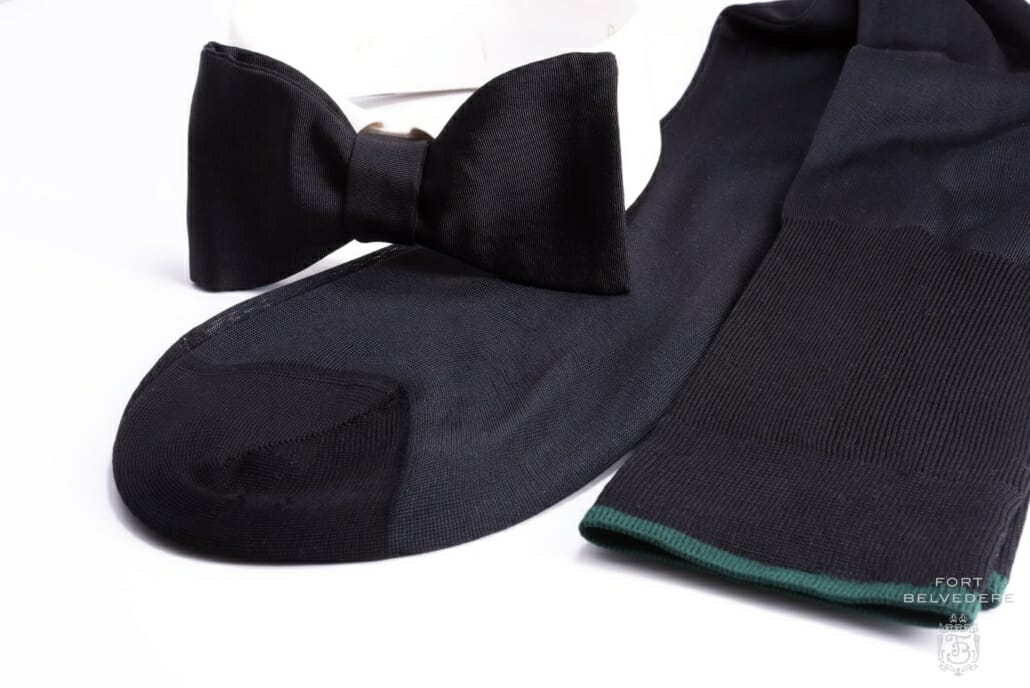
Socks
In term of socks, black silk in an over the calf length is best for a tuxedo. For socks to be worn with suits, you have got more options, and you can learn more about them here.
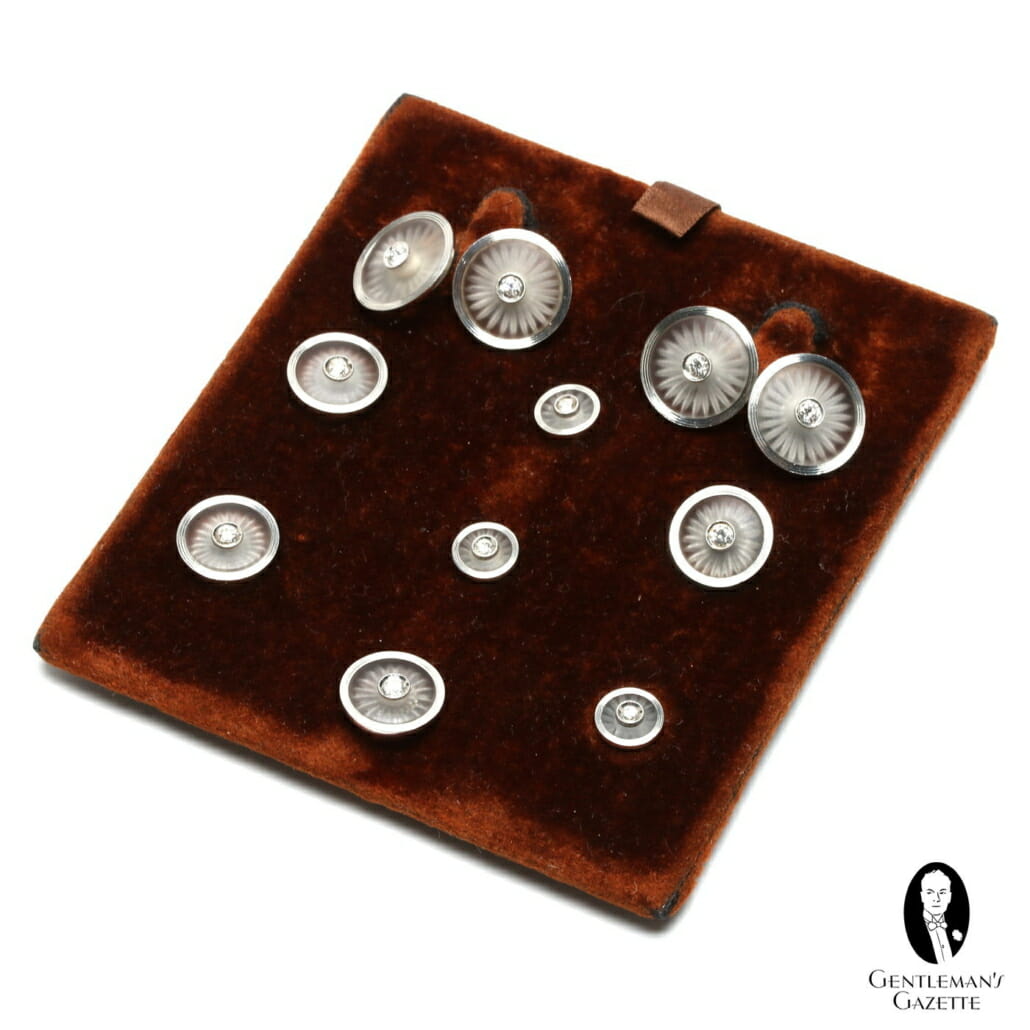
Accessories
Harmonizing black, gold, silver, or mother of pearl studs and cufflinks go well with a tuxedo, unless, of course, you are wearing a fly front shirt, in which case, you’ll just need the cufflinks and studs won’t be seen. You can also wear studs and links featuring precious gems but these are definitely a flashier choice. Your standard business shirt is not going to take studs, of course, but it can certainly take cufflinks. Avoid the cheap looking dress sets you find on amazon and get some quality dress sets instead.
Suspenders / Braces
The suspenders or braces worn with a tuxedo are most properly made from either black or white silk. Of course, though, since they are not really going to be seen by anybody other than you, you can feel free to wear something a little bit more playful if you would really like to. If you are wearing suspenders with your suit, the sky is the limit.
Pocket Square
The traditional pocket square for a tuxedo is one made of plain white linen. White silk is also acceptable and if you are looking for a way to add a subtle pop of color to your tuxedo, using a pocket square is a great way to do this. Meanwhile, pairing your pocket squares with your suits is similar in function to how you would approach it for ties. Which is to say, just pay attention to how things are harmonizing in terms of both color and overall level of formality.
Boutonniere
Finally, a carnation in either red or white is the most traditional boutonniere of choice for a tuxedo although you certainly could choose another flower of similar elegance, just so long as you make sure to keep it to one flower and not the miniature bouquets you will often see at weddings. For suits, stick to just one flower and make sure your colors are harmonious.
GENERAL DIFFERENCES BETWEEN A SUIT & A TUXEDO
1. Flexibility
Both in terms of its individual stylistic variability in terms of details and also in terms of how often you’ll be able to wear such an ensemble. As we mentioned with several of the individual garment breakdowns in the first video in this series, you’ve generally got quite a few options when it comes to pairing items with your suits whereas with a tuxedo, you’re typically only going to have one or two options that are considered correct.
If you’d really like to try to inject some more individual personality into your tuxedo, here’s a word of warning, be careful, be tasteful, and make sure that all of the more unique elements you incorporate, which there should really only be one or two of, are harmonious with the outfit overall. There is an overview of some accepted black-tie alternatives on the newly renovated black tie guide on our website.
2. Upfront Cost
A suit of reputable quality which is to say one that doesn’t outwardly look cheap can be purchased for anywhere from a few hundred dollars to just under a thousand and this, of course, can further be impacted by sales pricing. At the same time, if you’re assembling an outfit completely from scratch to go with your suit, you’re also going to have to pay a bit more upfront for the shirt, tie, shoes, and so on to go with it and you’ll probably want to spend a little bit on alterations tailoring as well.
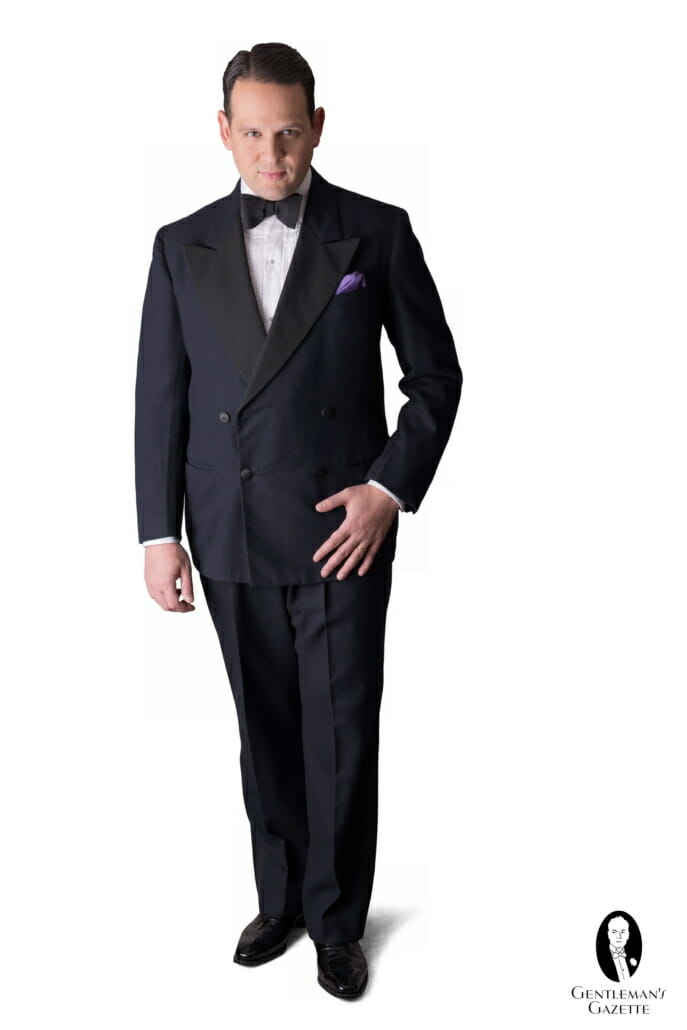
Conversely, you’ll probably be spending somewhere in the neighborhood of a thousand dollars for a good tuxedo with a leeway of a few hundred dollars in either direction. While you might have a shirt and other accompanying garments to go along with a new suit that you’ve bought, it stands to reason that if you’re buying your first new tuxedo, you’re also going to have to buy all of the accompanying garments and accessories at the same time. Of course, one way to circumvent this hefty price tag, either for buying a suit or a tuxedo, is to go the vintage route.
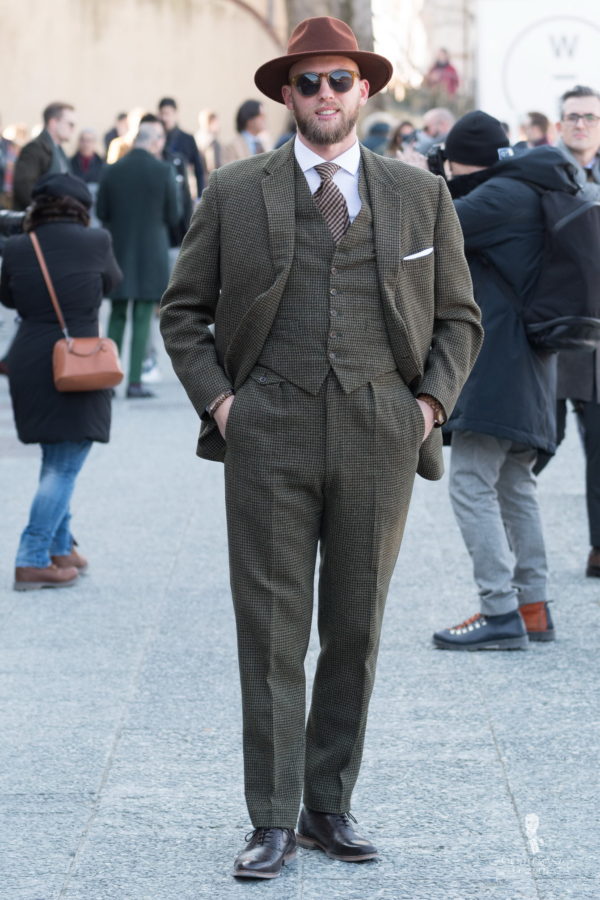
When looking at these heftier full price tags in terms of the metric of cost per wear, it’s much easier to justify buying a new suit. Not only will the upfront cost probably be lower but you’ll also probably be wearing that suit much more often than you would be a tuxedo. Still, if you run in circles where donning formal wear happens to be something that you do, more often than probably once a year, investing in a quality tuxedo and taking care of it well will probably be a better use of your money in the long run than continuing to just rent a tuxedo every time you need one. Meanwhile, if you’re only wearing black tie around once a year or even less, let’s say, at a wedding, for example, you could possibly justify renting as you’ll be able to find a rental tuxedo for somewhere in the neighborhood of $200 or so, often with accessories included.
Still, you’re probably not going to have the opportunity to have alterations done on rented garments and as we’ve said countless times on the channel, the fit should be your most important consideration. Therefore, wearing a formally styled suit that fits you well is always going to look better than wearing a rented tux that doesn’t fit your frame. And if the dress code for an event you’ll be attending is strictly black-tie and you don’t have a tux, we’d suggest that you consider taking the plunge and buying one to get it tailored rather than just going through the cycle of renting.
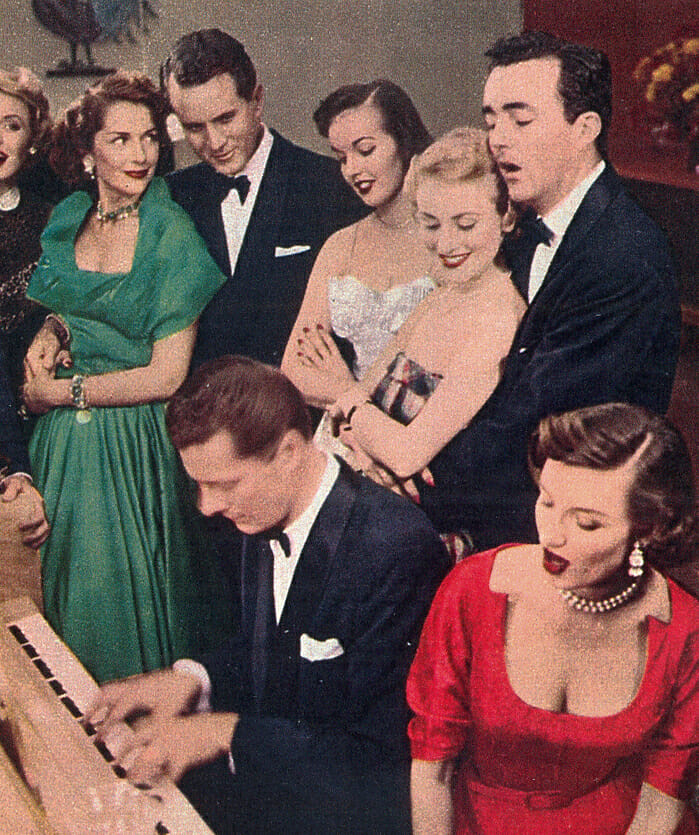
3. Attitude
Remember that in the broad strokes, the fundamental philosophy underlying the design of the tuxedo is rooted in simplicity and idealization of the male form. The refined minimalism of the color palette and the details of the styling are designed to make a man’s shoulders look broad, his waist look narrow, and his legs look long. Also, the black and white color scheme of men’s formalwear has typically meant historically, that the elaborate ballgowns of the ladies are to be the primary focus of any evening event.
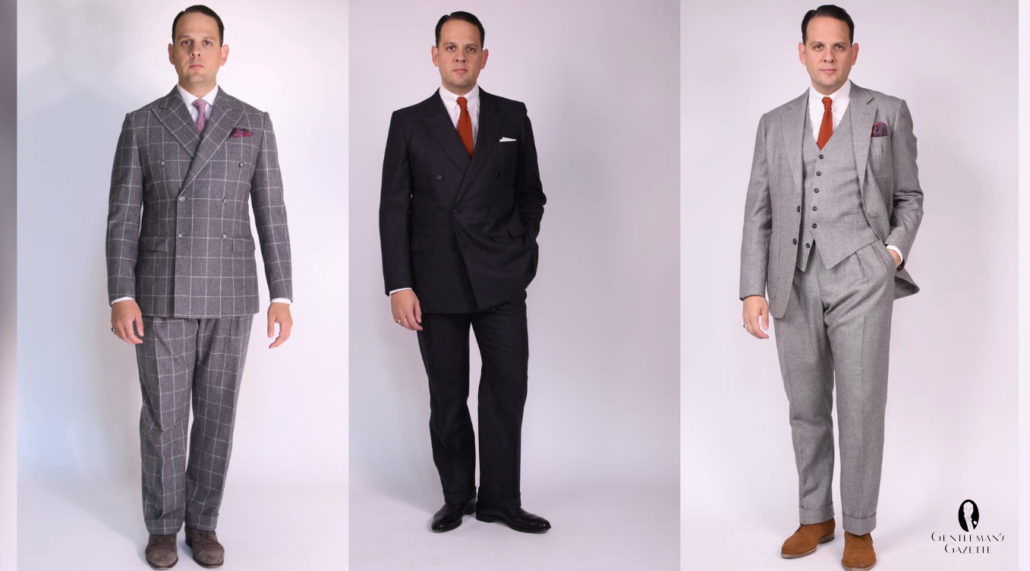
Suits, on the other hand, are built to accommodate a more varied image. They’re still designed to flatter your form of course but given that they’re to be worn in a wider variety of situations, it’s only natural that they’re going to come in a wider variety of styles. Think of it this way, a tuxedo falls under the definition of formal wear and in turn, the simplest definition of formal is following or according with established form, custom, or rule. In other words, this is a dress code designed with specific rules in mind.
While we, here at the Gentleman’s Gazette, are big fans and proponents of creativity in general, we think that overall applying that sense of creativity to a suit is more proper than trying to do so with the tuxedo. After all, black tie was designed and refined to make a man look his best so by respecting those traditions, you can get that much closer to achieving that sartorial goal.



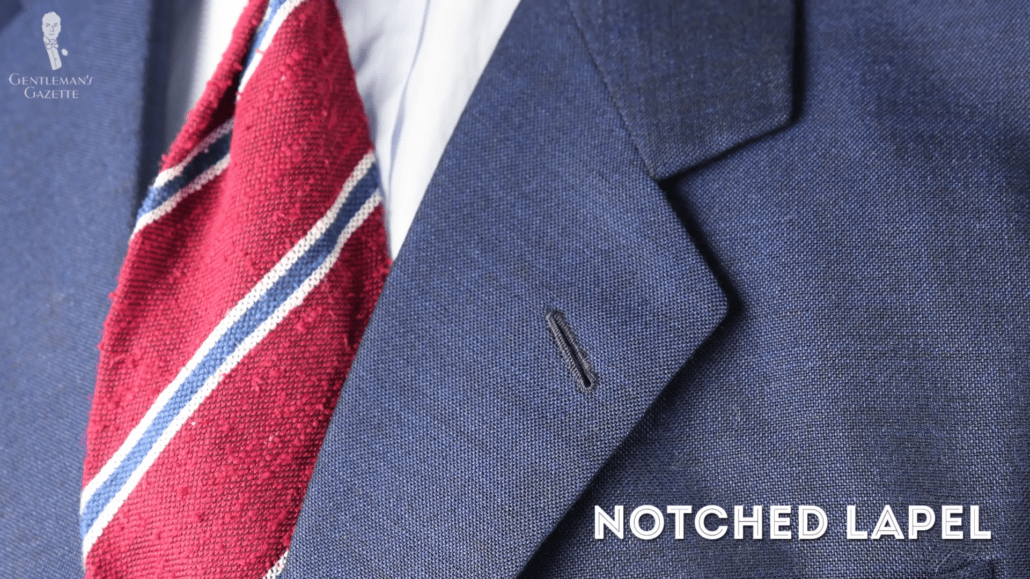
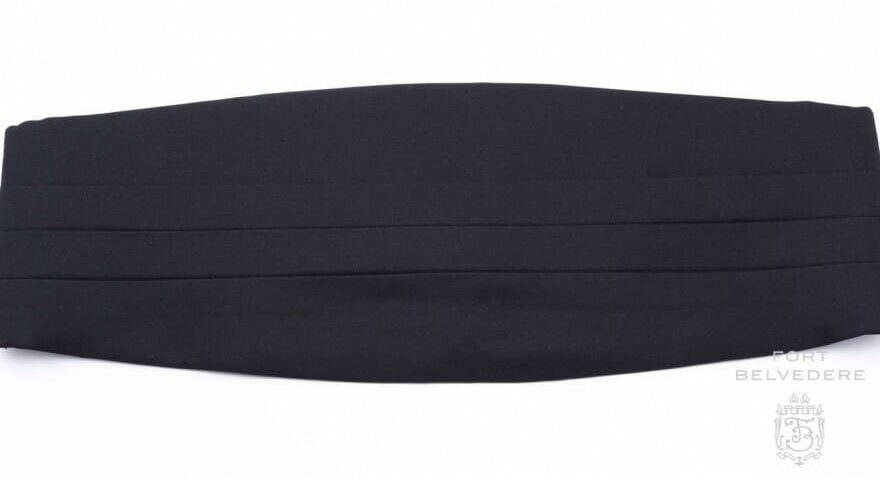
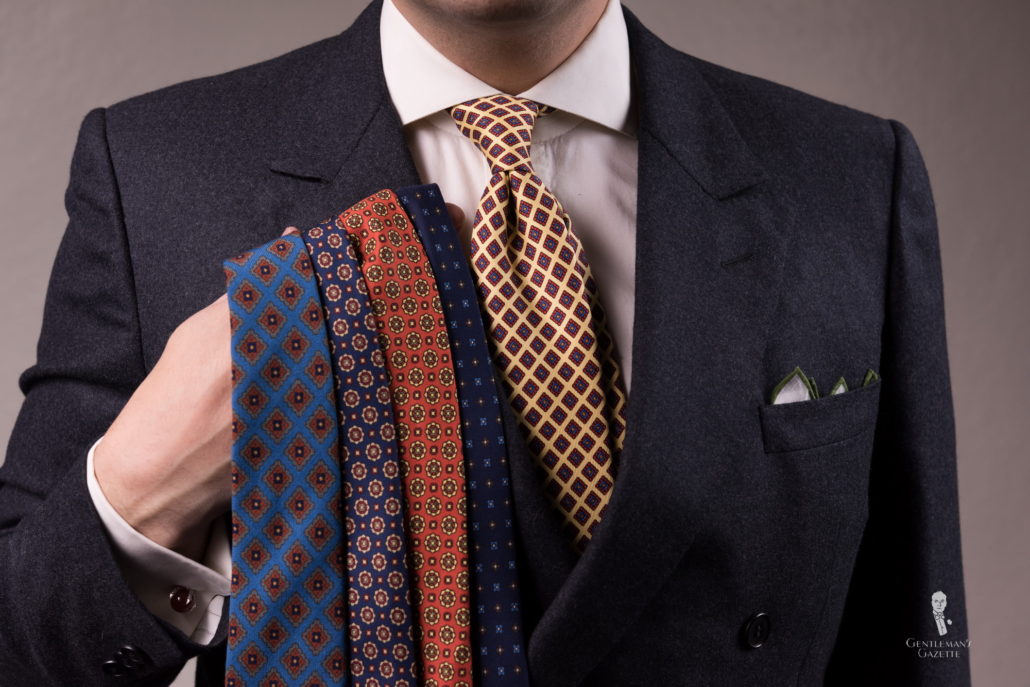
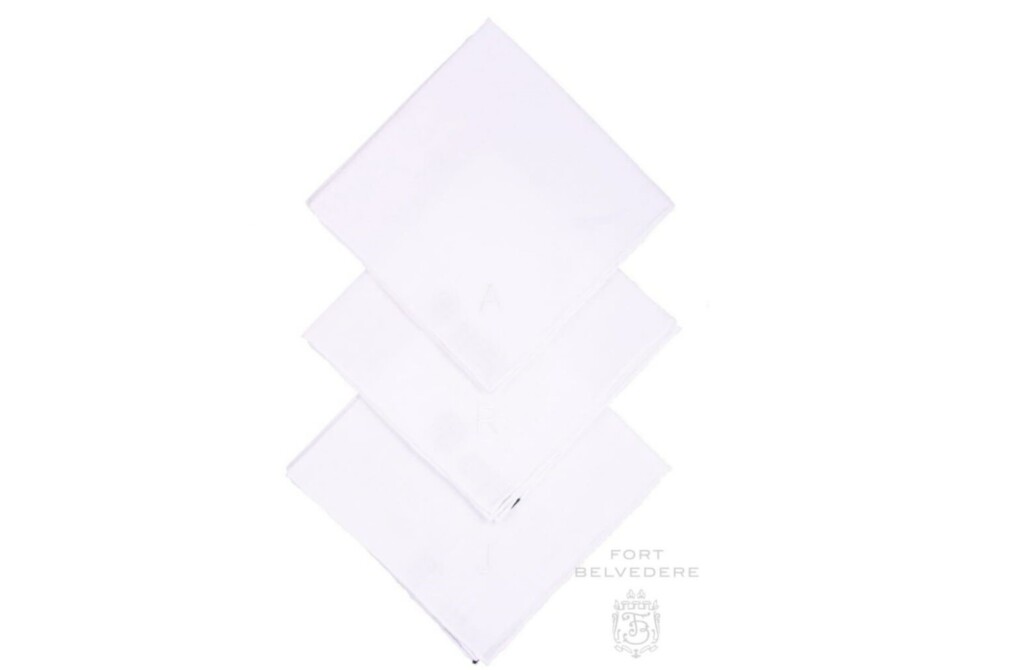
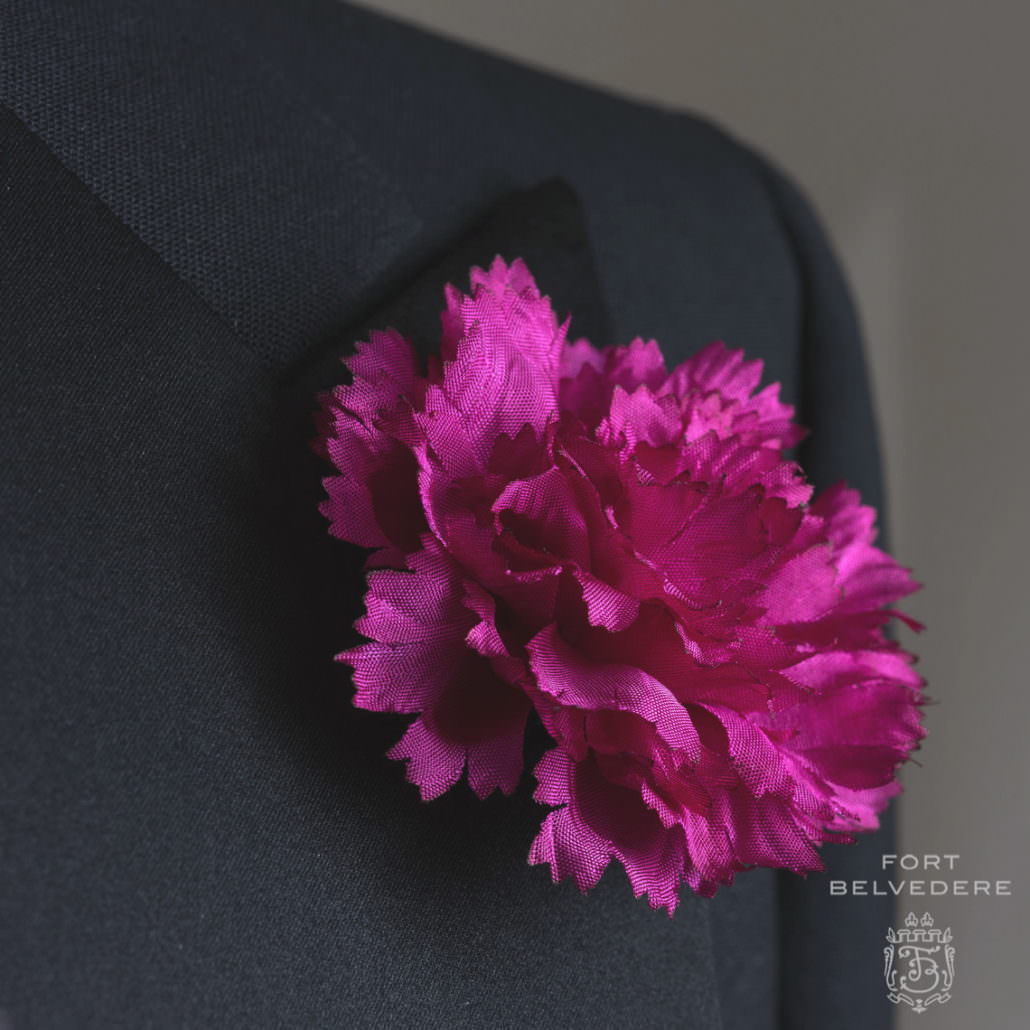
Comprehensive article
Loved the video. I wish I had more options to wear my tuxedo beside the yearly cruise. On A side note, when a tuxedo is not needed, what do you think is more formal, a 3 piece suit or a double breasted suit? Thanks for the great video.
Daniel , may I suggest to you for a formal looking looking suit use a dark blue worsted all wool or perhaps 5% silk (for sheen) and single breasted 2 button peak lapels . Add a vest 2×3 DB and no lapels on the vest . You get to choose a pocket watch if if like .
Stay away from DB jackets , they can look pretty ordinary unbuttoned and a bit over done . If you are less than 5’9″ they do nothing for your height . Don’t forget a really nice pair of Oxfords polished to the hilt . Cheers , get some fun out of life .
Preston, that’s a lower gorge than the grand canyon.
What are the “rules” for matching the color, fabric, texture, etc. of the cummerbund or waistcoat with the tuxedo? I have several tuxedos of different colors but only one black cummerbund & one black waistcoat. Is it acceptable to wear either of these with a tuxedo that is not black?
Your suit v tuxedo video was very impressive as usual but the vintage tux needed to be brushed of all lent and hair. Also, the young man was great!! Frank Ytturrhalde.
I love reading and watching the videos on all things a real gentleman can wear. I just wish there were more opportunities to wear them, as everyone today seems to dress like slobs!
I was surprised on a couple of things In this article though. The part about only wearing a fold over collar on a black tie and saving the wing tip for white tie is the first time I have read this here and seems to be a change from past articles? Wing tip just looks better with black tie then a fold over, even if it isn’t a detached collar like I have.
The traditional tuxedo from the 1920’s in my opinion just looks the best! The starched shirt and proper detached collar really stands out in a crowd these days especially since it is traditional. The way I see it though black tie in its self is very traditional, and It is hard to find events to even wear it let alone white tie! I do not own a white tie since I will never have an occasion to wear it.
Speaking of white tie, I was also surprised in this article to find that it is ok to wear opera pumps with black tie? Your past articles stated that opera pumps should be reserved for white tie only.
Absolutely amazing content. Really enjoyed reading it as I am a big fan of Formal Clothing.
Best suits and tuxedos are available at Manning Company Bespoke Tailors – Fine Tailors in Hong Kong.. Manning Company offers a wide range of suits and shirts and Bespoke clothing. They top the Hong Kong Tailor Recommendation as they use top quality fabrics and Great Styles for all suits.